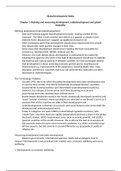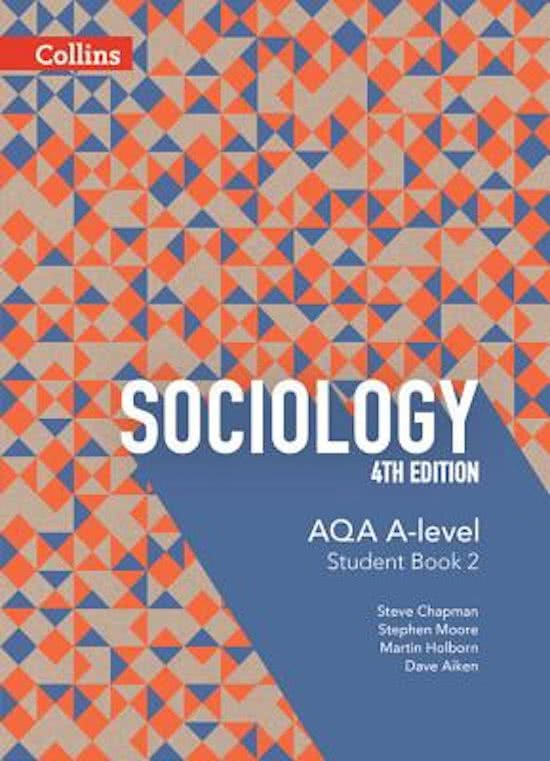Global Development Notes
Chapter 1: Defining and measuring development, underdevelopment and global
inequality
Defining development and underdevelopment;
- Pete and Hartwick suggest that development means ‘making a better life for
everyone’. This ideal is both emotive and ethical as it appeals to people’s best
instincts, but is disputed as it suggests an egalitarian future for all.
- Most sociologists agree that development should mean improvement for people
who desperately need positive changes in their lives.
- Some argue that development should mean meeting the basic necessities for
survival e.g. nutritious diet, shelter, medical care etc.
- However, the main debate about development is underpinned by modernity.
Meaning that agencies who work in the field of development should aim to replicate
the material and cultural aspects of Western societies. So most sociologists believe
that development is about achieving economic growth and its resulting social
improvement e.g. improvements of life expectancy, lowering death rates, mass
education and literacy. Countries that have not achieved this replication are often
described as underdeveloped.
The Terminology Problem:
- Up until 1990, the norm when discussing development and under development was
to use the three worlds: First World (industrially developed Western societies),
Second World (Communist Bloc) and Third World (underdeveloped countries).
However, the collapse of Communism and China becoming an economic
powerhouse led to the abandonment of these terms.
- Brandt Report divided the world in the ‘North’ (industrially developed countries) and
‘South’ (poorer countries). Many sociologists are reluctant to use Brandt’s terms as it
assumes that all the countries are alike in their development and
underdevelopment. A diversity of economic and social features exist across both the
developed and underdeveloped world.
- Today, 4 categories are used: MEDCs (industrialised-capitalist countries), NICs
(‘Asian-Tiger’ countries that have rapidly industrialised and have a share in the global
electronic market, LEDCs (experienced some socio-economic growth), and LLEDCs
(poorest countries of the world). However, this is still not the best as it assumes all
the countries share the same socio-economic problems, e.g. LEDCs and LLEDCs may
all have poverty, but this poverty is caused differently e.g. geographical, political,
religious etc.
Measuring development and under-development:
Western governments, international agencies, NGOs and sociologists tend to
measure development in two practical inter-related ways: economic wellbeing and social
wellbeing
1. Development as economic wellbeing:
, Development is often measured using the Gross National Product (total economic
value of goods and services produced by a country in a year divided by the total population).
It is argued that the GNP signals how economically healthy a society is, it also shows the
development gap between the developed world and developing world. When economic
growth does occur in the developing world, the rate of increase is much slower than the
developed world. (GNP of UK in 2017: $43,160 per capita, Congo: $870 per capita).
However, GNP is criticised by some sociologists:
- There are inconsistencies in the way that countries collect their data, so its reliability
or value as a comparative tool is questionable.
- Black argues that GNP data collection neglects the invisible and often illegal
‘economies of subsistence’ e.g. growing crops or animals for personal use,
prostitution, begging, selling drugs etc. which are the norm in poverty stricken
societies.
- Peet and Hartwick argue that GNP tell little about development. They argue that
social consequences of economic growth are more important, arguing that if
economic growth produces more ‘Walmart junk’ than it does schools and hospitals,
then it is not really development. Also, if economic growth concentrates wealth in
the hands of the few, it is not development. E.g. the USA 2017 GNP per capita was
$60,200 but this gives a false impression as some social groups, e.g. Native and
African Americans, experience disproportionate poverty. So economic growth in
terms of GNP does not necessarily mean social and economic growth for all
members of society. GNP in UK is growing, but so is inequality and poverty, e.g.
homelessness.
- GNP fails to document how much wealth actually remains in that society. In many
developing countries, industry is dominated by TNCs who transfer the wealth back to
the developed world. Also a great deal of wealth generated by developing societies
is paid back in aid repayments.
2. Development as social wellbeing
Some NGOs have stressed that measures of development should also focus on social
indicators of development. They argue that development should end subsistence poverty
and the right to experience ‘social wellbeing’. Social wellbeing defined as children able to
live to be adults, and adults able to live to be elderly as they have access to a nutritious diet,
shelter, safe drinking water, education, medication etc.
- A good example of this focus on social needs is the Human Development Index (HDI)
which aims to measure aspects of social wellbeing such as material standards of
living, adult literacy, life expectancy and the number of doctors per 100,000 etc. The
HDI in 2013 showed that underdevelopment when measured by literacy and life
expectancy continues to be a problem. E.g. USA: 99% literacy, 78.9 years life
expectancy. Sierra Leone: 43% literacy, 45.6 years life expectancy.
Sustainable development: the Environmentalist perspective
Brundtland Report proposed the idea of ‘sustainable development’. This concept
was based on the idea that although social and economic development was important, it
should not negatively affect the eco-system or the right for future generations to experience
the same living standards as the present generations.





